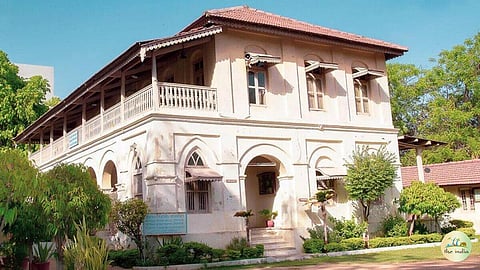Kochrab Ashram in Ahmedabad: Where the journey of Mohandas Gandhi towards becoming Bapu truly began!
While Sabarmati Ashram is widely known as the epicenter of Mahatma Gandhi's freedom struggle and advocacy for non-violence, it wasn't his first ashram. Before relocating to Sabarmati Ashram, Gandhi, accompanied by a small group of followers, resided in Kochrab Ashram for two years.
This ashram holds a significant place in history as a symbol of Gandhi's relentless battle against the practice of untouchability. In a sense, it was here that the journey of Mohandas Karamchand Gandhi into becoming the beloved 'Bapu' truly began.
The inception of Kochrab Ashram
Upon returning from South Africa, Gandhi sought to establish an ashram in India. Suggestions poured in, Tagore suggested him Santiniketan and the people of Rajkot suggested Gujarat. Fate, however, led him to Ahmedabad, where friends not only offered land but also financial support.
Jivanlal Vrajrai Desai, a close friend and barrister in the city, rented a house in Kochrab village near Paldi, Ahmedabad, and handed it over to Gandhi. On May 20, 1915, Gandhi conducted a special puja at this serene house, officially marking the beginning of his first ashram in Ahmedabad.
With just a few followers, he moved into the ashram, initially named Satyagraha Ashram. Many city merchants backed this movement, providing crucial financial support.
To guide the ashram's conduct, Gandhi drafted a set of rules and observances, including vows of Truth, Non-violence, Brahmacharya, Control of the Palate, Non-Stealing, Non-Possession, and Fearlessness, among others.
Defying taboos: Gandhi's stand for equality at Kochrab Ashram
A pivotal moment occurred when Gandhi received a letter from Amritlal Thakkar, a prominent social worker, informing him that a Dalit family wished to join the ashram. Despite the widespread taboo surrounding untouchability, Gandhi decided to welcome them. This decision faced opposition from ashram donors and followers, leading to a halt in financial support.
Undeterred, Gandhi stood firm, even announcing their readiness to move to the untouchables' quarters and sustain themselves through manual labor if needed. However, industrialist Ambalal Sarabhai, father of scientist Vikram Sarabhai, stepped in and donated Rs. 13,000, ensuring the ashram's survival for about two years.
As the ashram's population grew from 25 to 80, space constraints prompted Gandhi's decision to relocate to Sabarmati Ashram. It was from Kochrab that Gandhi laid the foundation for his first Satyagraha struggle in Champaran, Bihar, in 1917, championing the rights of peasants forced to cultivate indigo by plantation owners.
Today, Kochrab Ashram is under the management of Gujarat Vidyapith, a university founded by Mahatma Gandhi in 1920 during the non-cooperation movement. The ashram's premises include a bungalow with a library on the top floor, Gandhi's living quarters on the ground floor, an open prayer ground, and kitchen and storerooms located behind the bungalow.
To get all the latest content, download our mobile application. Available for both iOS & Android devices.

